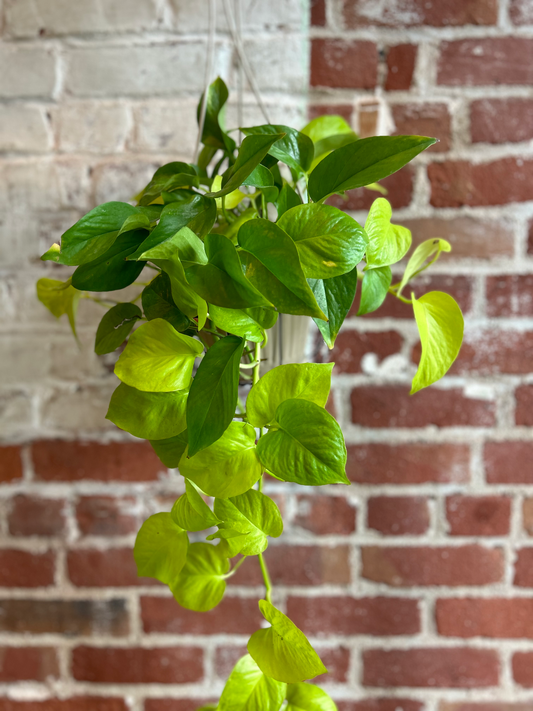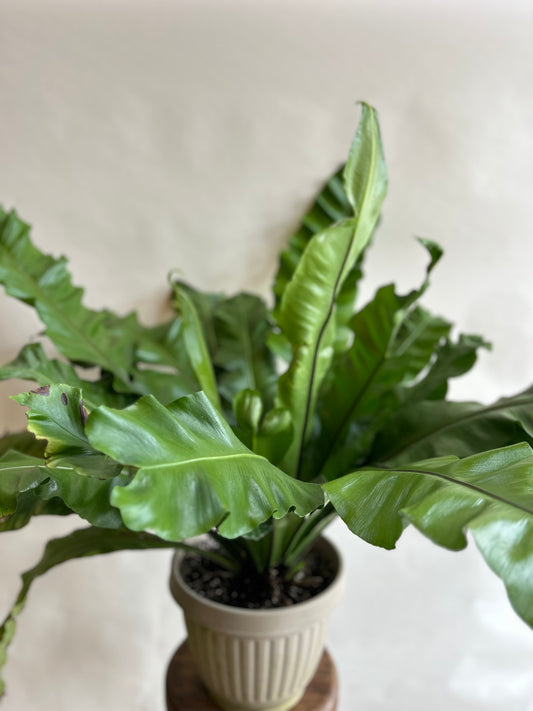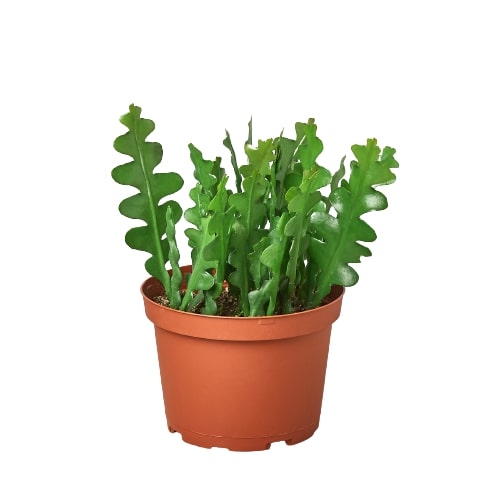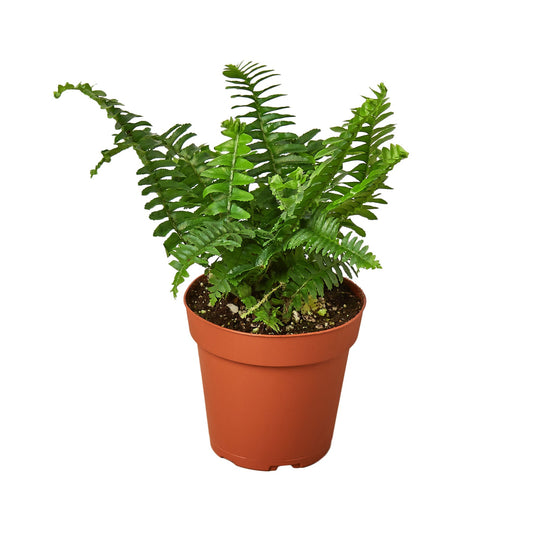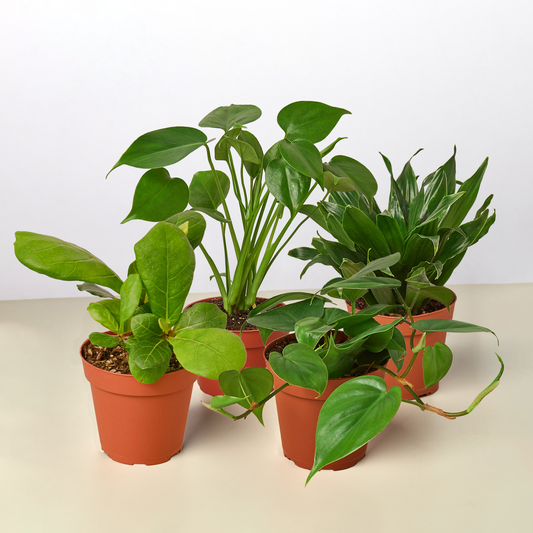What's The Best Pot For a Cast Iron Plant?
Cafe Planta Team
Choosing the right pot for your cast iron plant is more than just about aesthetics. Sure, you want something that looks good in your space, but it's also crucial to ensure your plant thrives. After all, a happy plant means a happy home, right?
In this article, we'll explore the best pot options for your cast iron plant, considering factors like material, size, drainage, and design. Whether you're a seasoned plant parent or just starting out, you'll find practical tips and insights to help you make the best choice.
Understanding the Cast Iron Plant
The cast iron plant, also known as Aspidistra elatior, is a beloved choice among plant lovers for its resilience and low-maintenance nature. This plant is like the superhero of the indoor jungle—able to withstand low light, irregular watering, and even neglect. But just because it's tough doesn't mean it doesn't appreciate a little TLC.
Before diving into pot selection, let's talk a bit about what makes the cast iron plant tick. It's known for its broad, dark green leaves that can brighten up any shady corner. This plant doesn't demand constant attention, making it perfect for those who might not have the greenest thumbs.
However, to keep it looking its best, you'll want to make sure it's in the right pot. The right pot can affect not only the plant's growth but also its health. So, let's get into what you should consider when choosing a pot for your cast iron plant.
Material Matters: Choosing the Right Pot Material
When selecting a pot for your cast iron plant, material is a key factor. Each type of pot material has its benefits and drawbacks, and choosing the right one depends on your plant care routine and the overall environment of your home.
Terracotta Pots
Terracotta is a popular choice because it allows the soil to breathe. These pots are porous, which means they can help prevent overwatering—a common issue with many houseplants. The downside? They can dry out faster, so you'll need to keep an eye on your watering schedule.
Plastic Pots
Plastic pots are lightweight and often more affordable. They retain moisture better than terracotta, which can be helpful if you tend to forget to water your plants. However, they don't offer the same breathability, which can lead to waterlogged soil if you're not careful.
Ceramic Pots
Ceramic pots come in a wide range of colors and styles, making them a stylish choice for any home. They often have a glaze that reduces their porosity, similar to plastic pots. This means they hold onto moisture but can be heavier and more fragile than other options.
Metal Pots
Metal pots are sleek and modern but can heat up quickly in direct sunlight, which might not be ideal for your cast iron plant. They also lack breathability, so consider using them as a decorative outer pot with a breathable inner pot.
With all these options, think about your lifestyle and how attentive you are to your plants. If you're more hands-off, plastic or ceramic might be your best bet. If you're diligent with watering, terracotta could be perfect.
Size Matters: Finding the Right Pot Size
Choosing the right size pot for your cast iron plant is crucial. A pot that's too small can restrict root growth, while a pot that's too large can hold too much water, leading to root rot.
Starting Small
When your cast iron plant is young, a smaller pot is ideal. It allows the roots to establish themselves without being overwhelmed by excess soil and moisture. As the plant grows, you'll need to repot it into a larger pot.
Gradual Upsizing
When it's time to repot, opt for a pot that's only one or two inches larger in diameter than the current one. This gradual increase helps prevent overwatering and gives the plant room to grow.
Depth Considerations
The depth of the pot is just as important as its width. A deep pot allows for better root growth and stability. Look for pots that are deep enough to accommodate the roots comfortably.
Remember, a well-sized pot helps maintain a healthy balance of soil moisture, air circulation, and root growth. Keep an eye on your plant, and if you notice it's becoming root-bound or the soil is drying out too quickly, it might be time for a bigger pot.
Drainage: The Secret to Happy Roots
Drainage is essential for any houseplant, including the cast iron plant. Without proper drainage, water can accumulate at the bottom of the pot, leading to root rot and other issues.
Drainage Holes
Always choose a pot with drainage holes at the bottom. These holes allow excess water to escape, preventing waterlogged soil. If your favorite pot doesn't have them, consider drilling some yourself or using it as a decorative cover pot.
Adding a Layer of Rocks
Some plant people like to add a layer of rocks or gravel at the bottom of the pot to improve drainage. While this can help, it's not a substitute for proper drainage holes. Think of it as an extra layer of insurance.
Saucers and Trays
Don't forget about saucers or trays to catch any water that drains out. This helps prevent water damage to your floors and furniture. Just remember to empty them regularly to avoid standing water.
Proper drainage is like a safety net for your plant's roots. It helps keep them dry and healthy, ensuring your cast iron plant can continue to thrive.
Design Considerations: Balancing Style and Function
While function is key, it doesn't mean you have to sacrifice style. The right pot can complement your home's decor and make your cast iron plant a true centerpiece.
Matching Your Decor
Consider the colors and materials already present in your home. Whether it's sleek and modern or cozy and rustic, there's a pot out there that will fit right in.
Playing with Shapes
Don't be afraid to experiment with different pot shapes. Round, square, or even geometric designs can add a fun touch to your space and showcase your plant in a unique way.
Textured Finishes
Textured pots can add depth and interest to your plant display. From matte to glossy finishes, there's a texture to suit every taste.
Ultimately, the pot is an extension of your personal style. Have fun with it, and remember that a well-chosen pot can enhance both your plant and your space.
Repotting Your Cast Iron Plant
Repotting is a crucial step in maintaining a healthy cast iron plant. It's not just about moving the plant to a bigger pot—it's an opportunity to refresh the soil and check the plant's roots.
Signs It's Time to Repot
How do you know when it's time to repot? Look for signs like:
- Roots growing out of the drainage holes
- Soil drying out faster than usual
- Stunted growth or yellowing leaves
Step-by-Step Repotting
When you're ready to repot, follow these steps:
- Gently remove the plant from its current pot.
- Loosen any compacted roots and trim any that are dead or damaged.
- Place the plant in the new pot, adding fresh soil around the roots.
- Water thoroughly, allowing excess water to drain.
Repotting can seem daunting, but it's a rewarding process that gives your plant a fresh start. Plus, it's a great excuse to treat yourself to a new pot!
Watering Tips for Your Cast Iron Plant
While the cast iron plant is forgiving when it comes to watering, it's still important to find the right balance. Too little water, and the leaves can turn brown. Too much, and you're inviting root rot.
Checking Soil Moisture
Before watering, check the soil moisture by sticking your finger about an inch into the soil. If it feels dry, it's time to water. If it's still damp, wait a few more days.
The Bottom-Up Method
Consider using the bottom-up watering method, where you place the pot in a tray of water and let the plant absorb moisture through the drainage holes. This encourages deep root growth and prevents overwatering.
Consistency is Key
Try to maintain a consistent watering schedule. While the cast iron plant can handle irregular watering, consistency helps it thrive. Aim for watering about once a week, adjusting based on your plant's needs and environment.
Watering might not be rocket science, but finding the right routine can make a big difference in your plant's health.
Light and Placement: The Right Spot for Your Plant
The beauty of the cast iron plant is its ability to thrive in low light conditions, making it perfect for those trickier spots in your home.
Low Light Tolerance
This plant isn't fussy about light. It can handle low light, but it also appreciates indirect light. Avoid direct sunlight, which can scorch the leaves.
Finding the Perfect Spot
Consider placing your cast iron plant in a north-facing room or in a spot with filtered light. It's a great choice for offices, bedrooms, or any room where natural light is limited.
Rotating for Even Growth
To encourage even growth, rotate your plant every few weeks. This ensures all sides get their fair share of light and helps maintain a balanced shape.
With its adaptable nature, the cast iron plant is a versatile addition to any space, bringing a touch of greenery to even the dimmest corners.
Common Issues and How to Solve Them
Even the hardiest plants can encounter issues. Knowing how to identify and solve common problems will keep your cast iron plant looking its best.
Browning Tips
If you notice brown tips on the leaves, it could be due to underwatering or low humidity. Try increasing your watering frequency or using a humidity tray to boost moisture levels.
Yellowing Leaves
Yellow leaves can be a sign of overwatering or poor drainage. Ensure your pot has sufficient drainage, and adjust your watering schedule accordingly.
Pest Problems
While rare, pests like spider mites or scale can affect your cast iron plant. Treat them with insecticidal soap or neem oil, and remove any heavily infested leaves.
Addressing issues promptly will ensure your plant stays healthy and continues to thrive in your care.
Final Thoughts
Choosing the right pot for your cast iron plant involves considering factors like material, size, and design. By keeping these elements in mind, you can ensure your plant has the best environment to grow and thrive.
At Cafe Planta, we believe in the power of plants to bring joy and connection. We're here to help you with all your plant care questions, so feel free to email us or reach out on Instagram. Whether you're looking for a new plant friend or need some plant-themed apparel, we're excited to support you on your plant journey!


